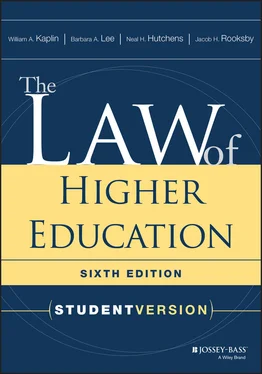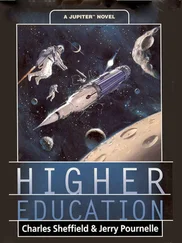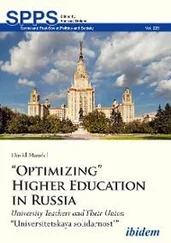1.5.2. The state action doctrine.
1.5.2.1 When private postsecondary institutions may be engaged in state action.Before a court will require that a postsecondary institution comply with the individual rights requirements in the federal Constitution, it must first determine that the institution's challenged action is state action. 4 When suit is filed under 42 U.S.C. § 1983 ( Section 1983) (see Sections 3.4and 4.4.4of this book), the question is rephrased as whether the challenged action was taken “under color of” state law, an inquiry that is the functional equivalent of the state action inquiry (see, for example, West v. Atkins , 487 U.S. 42 (1988)). Although the state action (or color of law) determination is essentially a matter of distinguishing public institutions from private institutions, and the public parts of an institution from the private parts—or more generally, distinguishing public “actors” from private “actors”—these distinctions do not necessarily depend on traditional notions of public or private. Due to varying patterns of government assistance and involvement, a continuum exists, ranging from the obvious public institution (such as a tax-supported state university) to the obvious private institution (such as a religious seminary). The gray area between these poles is a subject of continuing debate about how much the government must be involved in the affairs of a “private” institution or one of its programs before it will be considered “public” for purposes of the state action doctrine. As the U.S. Supreme Court noted in the landmark case of Burton v. Wilmington Parking Authority , 365 U.S. 715, 722 (1961), “Only by sifting facts and weighing circumstances can the non-obvious involvement of the State in private conduct be attributed its true significance.”
Since the early 1970s, the trend of the U.S. Supreme Court's opinions has been to trim back the state action concept, making it less likely that courts will find state action to exist in particular cases. The leading education case in this line of cases is Rendell-Baker v. Kohn , 457 U.S. 830 (1982). Another leading case, Blum v. Yaretsky , 457 U.S. 991 (1982), was decided the same day as Rendell-Baker and reinforces its narrowing effect on the law.
Rendell-Baker was a suit brought by teachers at a private high school who had been discharged as a result of their opposition to school policies. They sued the school and its director, Kohn, alleging that the discharges violated their federal constitutional rights to free speech and due process. The issue before the Court was whether the private school's discharge of the teachers was “state action” and thus subject to the federal Constitution's individual rights requirements.
The defendant school specialized in education for students who had drug, alcohol, or behavioral problems or other special needs. Nearly all students were referred by local public schools or by the drug rehabilitation division of the state's department of health. The school received funds for student tuition from the local public school systems from which the students came and were reimbursed by the state department of health for services provided to students referred by the department. The school also received funds from other state and federal agencies. Virtually all the school's income, therefore, was derived from government funding. The school was also subject to state regulations on various matters, such as record keeping and student-teacher ratios, and requirements concerning services provided under its contracts with the local school boards and the state health department. Few of these regulations and requirements, however, related to personnel policy.
The teachers argued that the school had sufficient contacts with the state and local governments so that the school's discharge decision should be considered state action. The Court disagreed, holding that neither the government funding nor the government regulation was sufficient to make the school's discharge of the teachers state action. As to the funding, the Court analogized the school's situation to that of a private corporation whose business depends heavily on government contracts to build “roads, bridges, dams, ships, or submarines” for the government, but is not considered to be engaged in state action. And as to the regulation, it did not address personnel matters. Therefore, said the court, state regulation was insufficient to transform a private personnel decision into state action.
The Court also rejected two other arguments of the teachers: that the school was engaged in state action because it performed a “public function” and that the school had a “symbiotic relationship” with—that is, was engaged in a “joint venture” with—government, which constitutes state action under the Court's earlier case of Burton v. Wilmington Parking Authority , 365 U.S. 715 (1961) (discussed above). As to the first argument, the Court reasoned in Rendell-Baker that the appropriate inquiry was whether the function performed has been “traditionally the exclusive prerogative of the state” (quoting Jackson v. Metropolitan Edison Co ., 419 U.S. at 353). The Court explained that the state never had exclusive jurisdiction over the education of students with special needs and had only recently assumed the responsibility to educate them.
As to the teachers' second argument, the Court concluded simply that “the school's fiscal relationship with the state is not different from that of many contractors performing services for the government. No symbiotic relationship such as existed in Burton exists here.”
Having rejected all the teachers' arguments, the Court, by a 7-2 vote, concluded that the school's discharge decisions did not constitute state action. It therefore affirmed the lower court's dismissal of the teachers' lawsuit.
In the years preceding Rendell-Baker , courts and commentators had dissected the state action concept in various ways. At the core, however, three main approaches to making state action determinations had emerged: the “nexus” approach, the “symbiotic relationship” approach, and the “public function” approach. The first approach, nexus, focuses on the state's involvement in the particular action being challenged and whether there is a sufficient “nexus” between that action and the state. According to the foundational case for this approach, Jackson v. Metropolitan Edison Co ., 419 U.S. 345 (1974), “the inquiry must be whether there is a sufficiently close nexus between the State and the challenged action of the [private] entity so that the action of the latter may be fairly treated as that of the State itself” (419 U.S. at 351 (1974)). Generally, courts will find such a nexus only when the state has compelled or directed, or fostered or encouraged, the challenged action.
The second approach, usually called the “symbiotic relationship” or “joint venturer” approach, has a broader focus than the nexus approach, encompassing the full range of contacts between the state and the private entity. According to the foundational case for this approach, Burton v. Wilmington Parking Authority , 365 U.S. 715 (1961), the inquiry is whether “the State has so far insinuated itself into a position of interdependence with [the institution] that it must be recognized as a joint participant in the challenged activity” (365 U.S. at 725). When the state is so substantially involved in the whole of the private entity's activities, it is not necessary to prove that the state was specifically involved in (or had a “nexus” with) the particular activity challenged in the lawsuit.
Читать дальше












